Champagne is an exquisite and refined sparkling wine with a delicate flavor and luxurious taste. Today, we will help you understand more about this wine, as well as the differences between Champagne and Sparkling Wine.
1 What is Champagne?
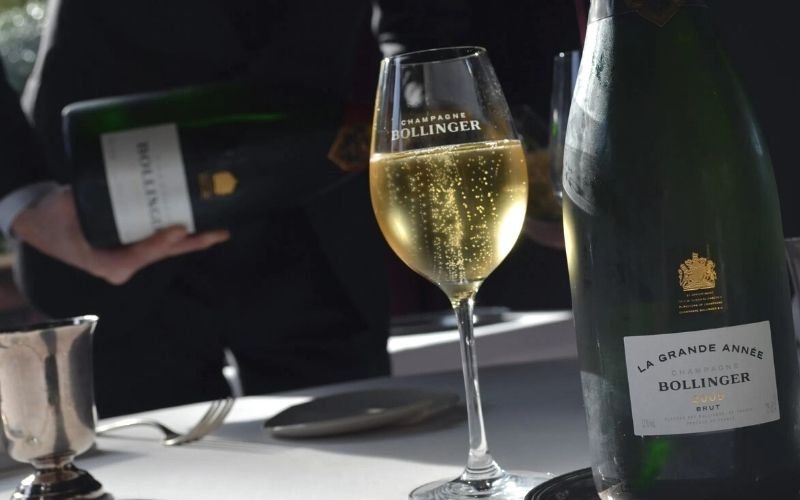 An overview of Champagne
An overview of Champagne
Champagne is a type of sparkling wine produced by a secondary fermentation of grape juice from the Champagne region, located east of Paris and in the north of France. This fermentation process occurs in wine containers with the addition of sugar and yeast to create carbonation and bubbles.
This unique fermentation process causes the wine to effervesce when the bottle is opened, creating a special, interesting, and attractive spectacle. At the same time, the wine fermentation process also alters the flavor of the Champagne, making it richer in fruity and yeasty notes.
2 Things You Didn’t Know About Champagne
The Aging Process
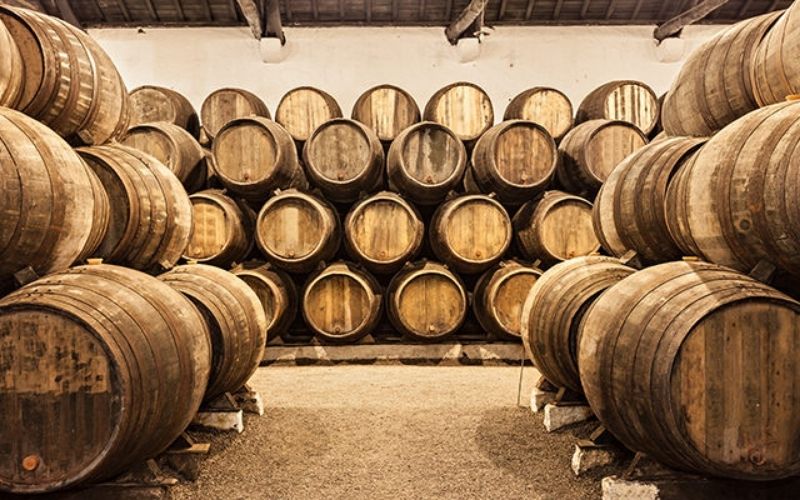 Champagne ages in large wine containers
Champagne ages in large wine containers
As mentioned above, the name Champagne originates from the region where this wine is produced, which experiences very cold winters. This often interrupts the fermentation process, and the second fermentation typically occurs in the spring of the following year.
During this aging process, wine producers must implement solutions to prevent premature fermentation. This unique process gives birth to Champagne, which is beloved for its subtle and rich flavors.
There are Many Similar Versions of Champagne
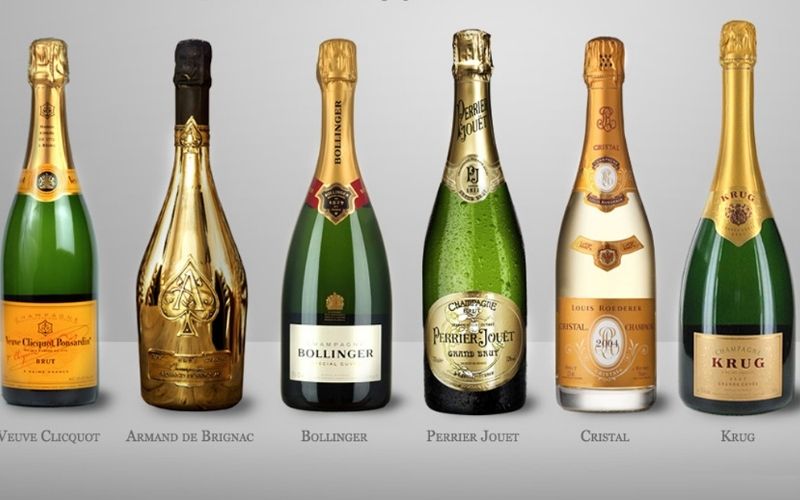 There are many similar versions of Champagne
There are many similar versions of Champagne
Currently, there are many wines on the market that resemble Champagne in terms of flavor, color, and appearance. However, it is important to note that authentic Champagne must be produced in the Champagne region of France, following the prescribed fermentation process, and it must have the appropriate permits and international certifications.
Champagne is Made from Only Three Types of Grapes
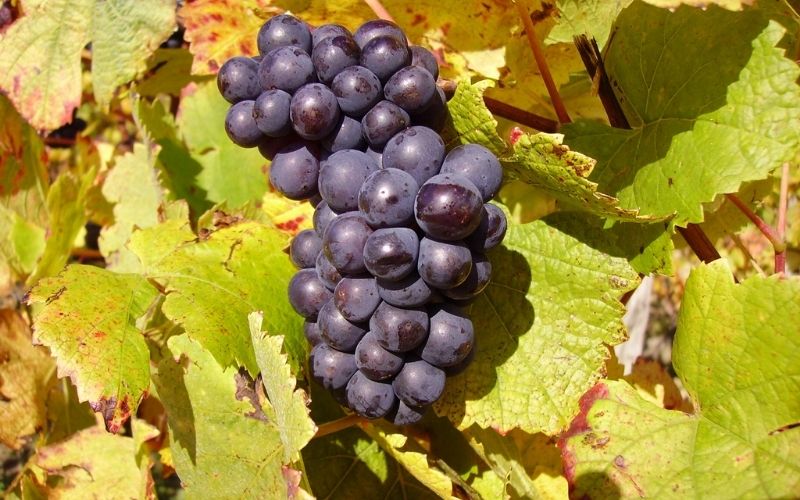 Champagne is made from a select few grape varieties
Champagne is made from a select few grape varieties
To avoid impurities and ensure a smooth fermentation process, only one to three types of grapes are used: Pinot Meunier, Pinot Noir, and Chardonnay, in appropriate proportions, to create a variety of flavors.
Champagne Has Three Times More Carbonation Than Beer
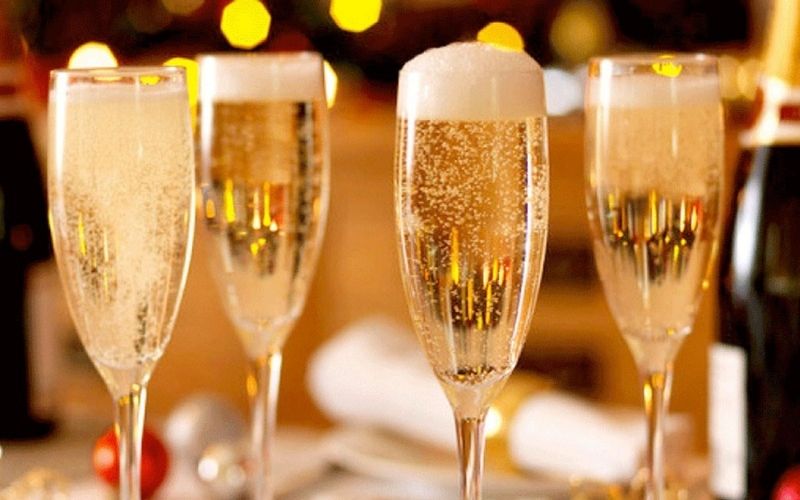 Champagne has three times more carbonation than beer
Champagne has three times more carbonation than beer
Due to the extended fermentation process and the addition of sugar, Champagne typically has a much higher level of carbonation, approximately three times that of beer. Additionally, the sweetness of Champagne is determined by the amount of residual sugar per liter of wine, with three basic levels: Sec (sweet), Demi-Sec (semi-sweet), and Brut (dry).
There are Price Differences Between Champagne Versions
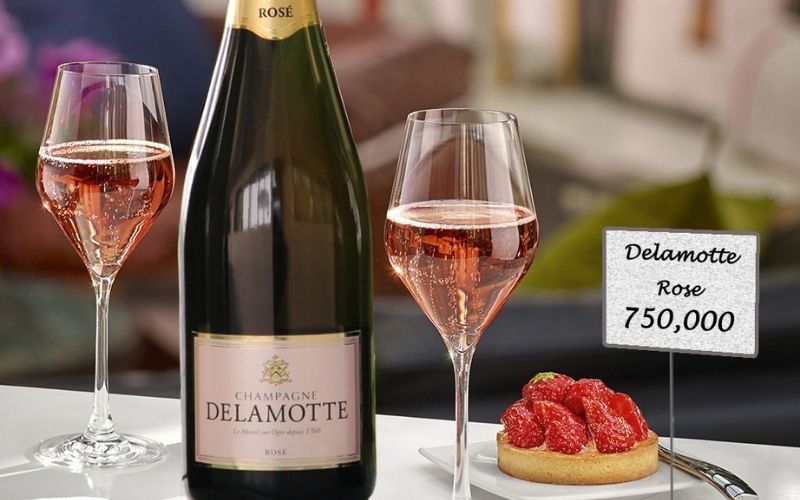 Price differences exist between Champagne versions
Price differences exist between Champagne versions
The price of different Champagne versions can vary significantly. Currently, the most affordable Champagne can cost just a few dozen dollars, while rare versions such as Clos du Mesnil can range from a few hundred to a few thousand dollars.
Champagne is Commonly Used in Cocktails
 Champagne is often used in cocktails
Champagne is often used in cocktails
In upscale bars, bartenders may use Champagne instead of sparkling wine to create various cocktails and mixed drinks. With this sophisticated wine, your cocktail will not only be visually appealing but also offer a rich, intense, and subtle flavor profile.
3 What’s the Difference Between Champagne and Sparkling Wine?
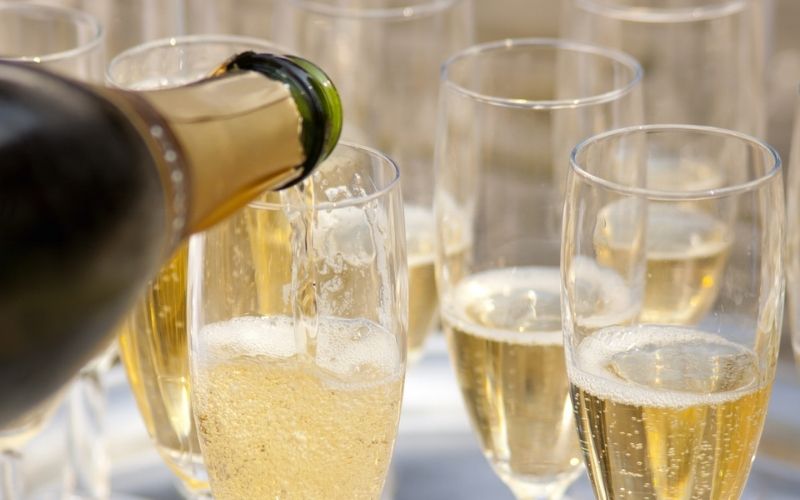 Sparkling Wine is a type of sparkling wine similar to Champagne
Sparkling Wine is a type of sparkling wine similar to Champagne
Sparkling Wine, also known as sparkling wine or sparkling wine, is produced through a fermentation process and has a slightly bitter, intense flavor similar to Champagne.
However, the most significant difference between these two wines lies in their place of origin. Specifically, wine produced in the Champagne region of France is called Champagne, while wines produced at a lower cost in other countries such as the US, Spain, and Australia are referred to as Sparkling Wine.
4 10 Delicious and Famous French Champagnes
Dom Perignon Vintage Champagne
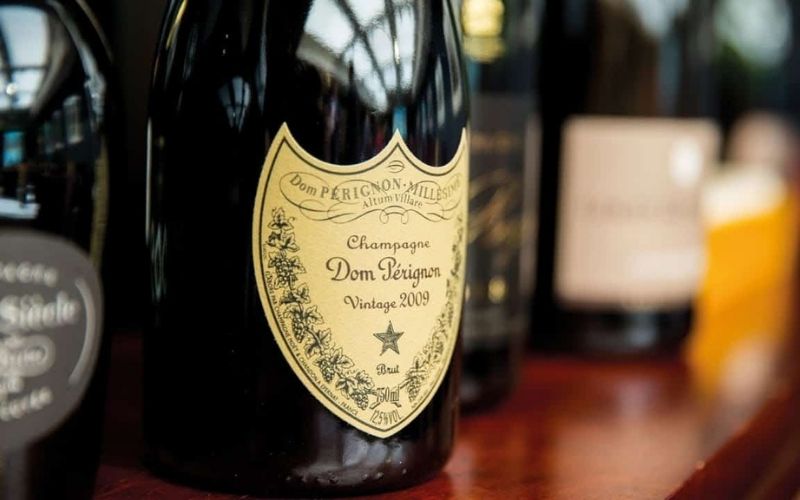 Dom Perignon Vintage Champagne
Dom Perignon Vintage Champagne
As one of the most prestigious Champagnes, Dom Perignon Vintage Champagne offers a complex blend of natural ingredients such as nuts, brioche, honey, flowers, and oak.
This wine is typically paired with sophisticated dishes like truffles, caviar, lobster, oysters, and foie gras to enhance the dining experience. To fully appreciate its rich flavor, it is recommended to serve and store Dom Perignon Vintage at room temperature, between 14°C and 18°C.
Dom Perignon Vintage Champagne is currently available at large and reputable wine shops for approximately 4,950,000 VND per 750ml bottle.
Dom Perignon Luminous Champagne – The Glowing Bottle
 Dom Perignon Luminous Champagne – The Glowing Bottle
Dom Perignon Luminous Champagne – The Glowing Bottle
Beyond its eye-catching appearance, Dom Perignon Luminous Champagne will further stimulate your taste buds when paired with dishes like cheese, poultry, and seafood.
This Champagne is a delicate blend of fresh fruit notes like peach, apricot, plum, and citrus, complemented by oak and nutty flavors. This unique combination helps to soothe and relax your senses after a long day of work or study.
Dom Perignon Luminous Champagne is currently available at large and reputable wine shops for approximately 7,000,000 VND per 750ml bottle.
Moet & Chandon Imperial Champagne
 Moet & Chandon Imperial Champagne
Moet & Chandon Imperial Champagne
This Champagne is also suitable for accompanying grilled meats, seafood, and vegetable salads. It is recommended to store Moet & Chandon Imperial at room temperature, between 16°C and 18°C.
Its distinctive flavor is a result of blending three different types of grapes with natural ingredients like apple, pear, orange, lemon, floral notes, and oak. This combination creates a smooth and sweet taste with a creamy texture.
Moet & Chandon Imperial Champagne is currently available at large and reputable wine shops for approximately 1,350,000 VND per 750ml bottle.
Armand De Brignac Gold Champagne
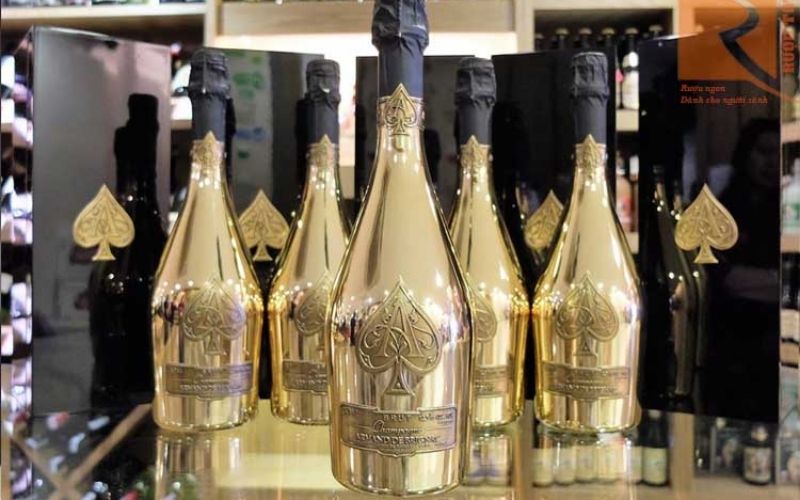 Armand De Brignac Gold Champagne
Armand De Brignac Gold Champagne
As one of the most elegant Champagnes, Armand De Brignac Gold should be stored at a cooler temperature, between 8°C and 12°C, and can be paired with dishes like caviar, truffles, poultry, and meat.
When savored, this Champagne reveals a unique blend of flavors, including vanilla, lemon, orange blossom, and other fruits like plum, apricot, and peach. This combination awakens your taste buds from the very first sip.
Armand De Brignac Gold Champagne is currently available at large and reputable wine shops for approximately 9,700,000 VND per 750ml bottle.
Bottega Gold Champagne
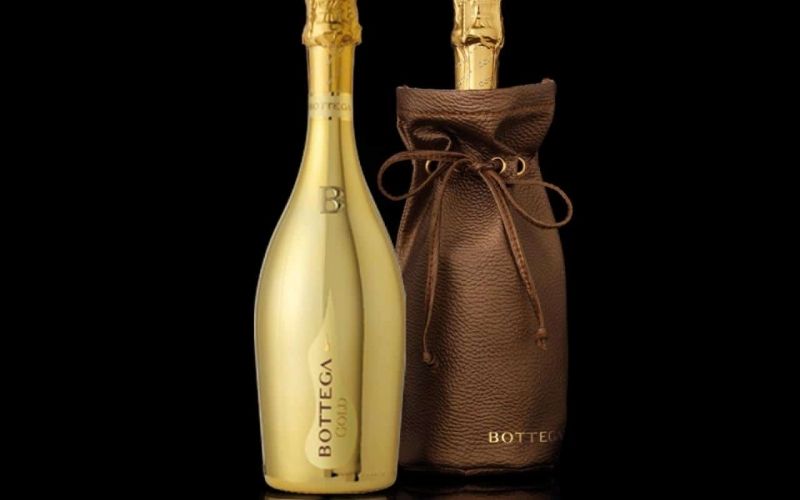 Bottega Gold Champagne
Bottega Gold Champagne
With its elegant and refined appearance, Bottega Gold Champagne is perfect for family gatherings and outdoor BBQ parties when paired with dishes like cheese, nuts, salmon, caviar, and truffles.
Its delicate sweetness is a result of blending citrus fruits like lemon, orange, grapefruit, and bergamot with natural floral and woody notes like acacia, linden, and oak. This combination awakens your taste buds gently without overwhelming you with the alcohol content.
Bottega Gold Champagne is currently available at large and reputable wine shops for approximately 1,080,000 VND per 750ml bottle.
Louis Roederer Cristal Brut Champagne
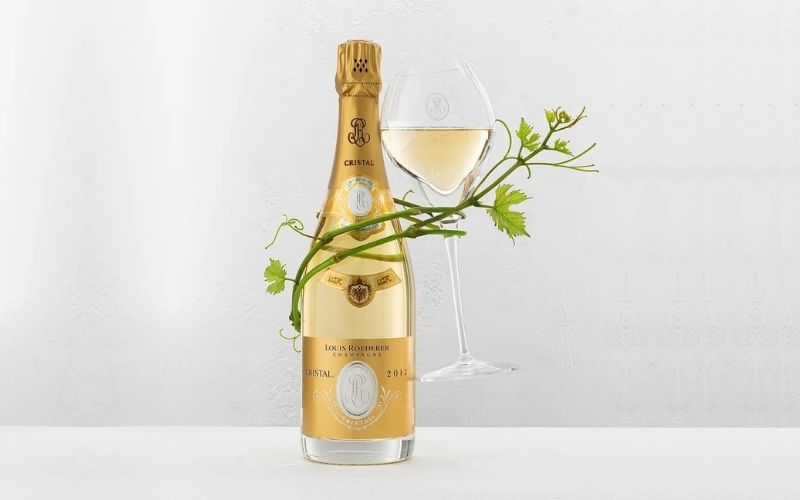 Louis Roederer Cristal Brut Champagne
Louis Roederer Cristal Brut Champagne
This Champagne is commonly found in upscale restaurants and offers a superior experience when stored at a cooler temperature, between 8°C and 12°C, and paired with red or white meat, seafood, and other dishes.
In addition to featuring two renowned grape varieties as its main ingredients, this Champagne is elevated by the addition of natural ingredients like citrus fruits, honey, oak, and vanilla, creating a rustic, slightly bitter, yet captivating and subtle flavor profile.
Louis Roederer Cristal Brut Champagne is currently available at large and reputable wine shops for approximately 7,240,000 VND per 750ml bottle.
Canard Duchenne Brut Champagne
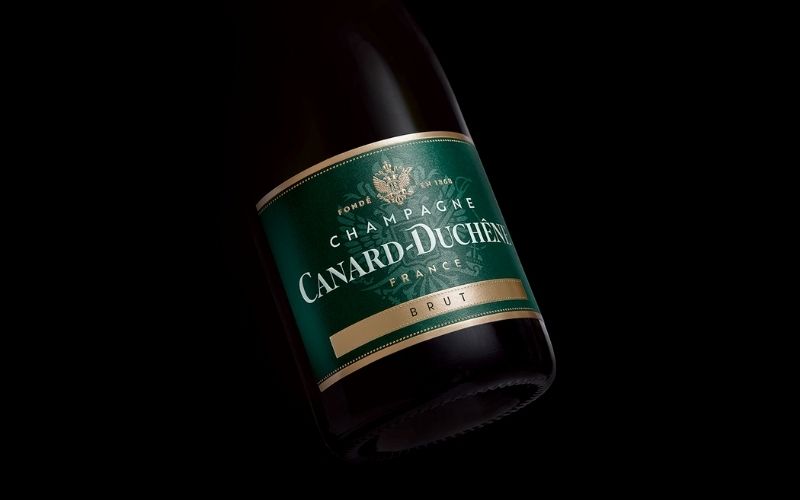 Canard Duchenne Brut Champagne
Canard Duchenne Brut Champagne
To preserve the integrity of its flavor, Canard Duchenne Brut Champagne should be stored at an ideal temperature between 14°C and 16°C and paired with dishes like cheese, nuts, and salmon.
While it may not have the same sweet allure as the previously mentioned Champagnes, Canard Duchenne Brut is still beloved for its slightly bitter and tangy notes, resulting from a blend of ingredients like tangerine, orange, white flowers, oak, and vanilla.
Canard Duchenne Brut Champagne is currently available at large and reputable wine shops for approximately 1,290,000 VND per 7
































